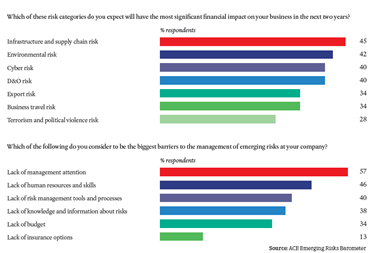Paul Owens, who was named head of the newly formed Willis global captive management business at the start of 2014, explains why an increasing number of companies are looking to Asia to establish new domiciles
Businesses in emerging economies account for a growing share of the world’s biggest companies. Figures from the World Economic Forum illustrate this point. In 2012, 127 of the world’s largest 500 multinational corporations hailed from emerging economies. Less than a decade earlier, in 2003, the figure was a paltry 19.
Asia is undergoing a staggering economic boom and accounts for a large number of these new global players, which are increasingly competing with large companies from the traditional markets in Europe and the US.
As Asia-based companies expand, acquire more assets overseas and become increasingly sophisticated, they are looking for alternative ways to manage their risks. One option that many Asia-based multinationals are exploring is risk retention using a captive insurance company. This trend is given further impetus by governments and regulatory authorities in the Asia-Pacific region, which, in turn, see the creation of new domiciles for these captives as an attractive means of developing their economies further.
Some domiciles, in particular Singapore, have invested significantly in the infrastructure and legislative frameworks to attract captive formations. China and Hong Kong are close behind. I expect Malaysia, Indonesia, Taiwan and South Korea to follow suit.
Although Asia currently accounts for only 5% of captives worldwide, I anticipate this to grow in the next five to 10 years. However, not all these companies will choose Asia as the place to establish their captives. It’s also worth noting that the established captive markets of Europe and the US took about 30 to 40 years to develop into maturity. The less developed captive markets are hoping to compress this development time into a much shorter horizon.
In terms of legislative development, Hong Kong has a framework that is very recognisable within the rest of the captive world, with capitalisation and regulatory rules that are comparable with larger and more established domiciles in the Caribbean and the US.
Hong Kong is, however, less well established as an Asian captive centre than Singapore or even Labuan, so growth there will most likely depend upon the development of captives in the Chinese market.
I expect Singapore to continue to lead the market in the short term, but given rapid changes in Hong Kong and China, this leadership position might be challenged soon.




















No comments yet